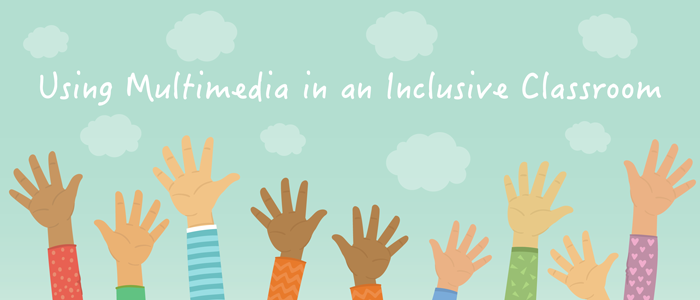Using Multimedia in an Inclusive Classroom

The use of multimedia enhances the instruction of diverse learners. Multimedia can increase children’s interest and engagement and expand opportunities to interact with and experience the material. Because multimedia combines listening and observing, more of the brain is engaged than if the same content was presented solely through text or spoken word.
Accessing multimedia through smartphones or tablets allows children of varying abilities and learning styles to engage with the lesson in the same way at the same time, which can increase self-esteem, reduce the anxiety of children with disabilities, and build a more cohesive and supportive community of learners.
While many children may have experience using digital devices at home, do not take for granted that children are familiar with the basics, such as powering on or off a device, recalling a password, and handling digital devices carefully. Build time into your lesson planning to teach these skills before the class uses a digital device for the first time. If possible, project or write instructions on the board or screen for children to access. This will be helpful for everyone.
Like many transitions, putting away a device and moving on to the next task may cause anxiety and frustration for some children. Knowing what will happen next and that they will have time later or the next day to use the device can help minimize distress. Consider providing children with a schedule that shows how their day will unfold.
If children will share devices, use this as an opportunity to reinforce healthy ways to share and work with a partner. Some children may have difficulty making their needs known using words. Role-play sharing scenarios and/or use preprinted cards with symbols to help children better communicate.
Establishing rules for technology in the classroom is important. Post the rules where they can be easily seen and reviewed. Consider taking pictures of children following the rules. Print and post the pictures next to the rules as an example and acknowledgment that the child is following the rules.
Provide information for parents regarding the use of technology in your classroom in advance. Share your rules and expectations with parents. Request that children bring in their devices on specific days when you plan to use them. Understand your children’s needs. Ask parents about their children’s experience and comfort with technology. This is also a good time to find out what technology the children have available to bring to class. Remember: not all children can tolerate visual or auditory stimulation.

